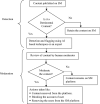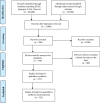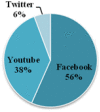Detection and moderation of detrimental content on social media platforms: current status and future directions
- PMID: 36090695
- PMCID: PMC9444091
- DOI: 10.1007/s13278-022-00951-3
Detection and moderation of detrimental content on social media platforms: current status and future directions
Abstract
Social Media has become a vital component of every individual's life in society opening a preferred spectrum of virtual communication which provides an individual with a freedom to express their views and thoughts. While virtual communication through social media platforms is highly desirable and has become an inevitable component, the dark side of social media is observed in form of detrimental/objectionable content. The reported detrimental contents are fake news, rumors, hate speech, aggressive, and cyberbullying which raise up as a major concern in the society. Such detrimental content is affecting person's mental health and also resulted in loss which cannot be always recovered. So, detecting and moderating such content is a prime need of time. All social media platforms including Facebook, Twitter, and YouTube have made huge investments and also framed policies to detect and moderate such detrimental content. It is of paramount importance in the first place to detect such content. After successful detection, it should be moderated. With an overflowing increase in detrimental content on social media platforms, the current manual method to identify such content will never be enough. Manual and semi-automated moderation methods have reported limited success. A fully automated detection and moderation is a need of time to come up with the alarming detrimental content on social media. Artificial Intelligence (AI) has reached across all sectors and provided solutions to almost all problems, social media content detection and moderation is not an exception. So, AI-based methods like Natural Language Processing (NLP) with Machine Learning (ML) algorithms and Deep Neural Networks is rigorously deployed for detection and moderation of detrimental content on social media platforms. While detection of such content has been receiving good attention in the research community, moderation has received less attention. This research study spans into three parts wherein the first part emphasizes on the methods to detect the detrimental components using NLP. The second section describes about methods to moderate such content. The third part summarizes all observations to provide identified research gaps, unreported problems and provide research directions.
Keywords: Artificial intelligence (AI); Detection and moderation; Natural language processing (NLP); Social media (SM) platforms.
© The Author(s), under exclusive licence to Springer-Verlag GmbH Austria, part of Springer Nature 2022, Springer Nature or its licensor holds exclusive rights to this article under a publishing agreement with the author(s) or other rightsholder(s); author self-archiving of the accepted manuscript version of this article is solely governed by the terms of such publishing agreement and applicable law.
Figures














References
-
- Ahmed H, Traore I, Saad S (2017) Detection of online fake news using N-Gram analysis and machine learning techniques. In: Traore I, Woungang I, Awad A (eds) Intelligent, secure, and dependable systems in distributed and cloud environments. ISDDC. Lecture Notes in Computer Science, Vol. 10618, pp 127–138. 10.1007/978-3-319-69155-8_9.
-
- Amrutha BR, Bindu KR (2019) Detecting hate speech in tweets using different deep neural network architectures. In: Proceedings of the international conference on intelligent computing and control systems (ICICCS 2019) IEEE, pp 923–926. 10.1109/ICCS45141.2019.9065763.
-
- Andersen JS, Zukunft O, Maalej W (2021) REM: efficient semi-automated real-time moderation of online forums. In: Proceedings of the joint conference of the 59th annual meeting of the association for computational linguistics and the 11th international joint conference on natural language processing: system demonstrations. pp 142–149.
-
- Ayo FE, Folorunso O, Ibharalu FT, Osinuga IA. Machine learning techniques for hate speech classification of twitter data: State-of-the-art, future challenges and research directions. Comput Sci Rev Elsevier. 2020 doi: 10.1016/j.cosrev.2020.100311. - DOI
-
- Badjatiya P, Gupta S, Gupta M, Varma V (2017) Deep learning for hate speech detection in tweets. In: 26th international conference on world wide web companion, Perth, Australia, pp 759–760. 10.1145/3041021.3054223.
Publication types
LinkOut - more resources
Full Text Sources
